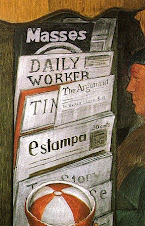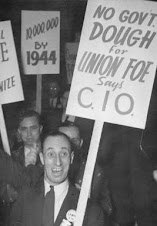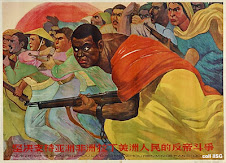
By Martha Grevatt
Published Apr 22, 2010 8:24 PM
Next year the United Auto Workers union will commemorate its 75th anniversary. Highlights from the union’s history — the great sit-downs of 1936-37, the long and bitter General Motors strike after World War II, and subsequent strikes that institutionalized annual wage increases, a cost-of-living allowance, supplementary unemployment benefits, pensions, cradle-to-grave health coverage for autoworkers and their dependents, and more — will feature prominently during the UAW’s 35th Constitutional Convention this June 14-17 in Detroit.
Yet while the UAW leadership is attempting to identify itself with the union’s heroic past, rank-and-file anger at the International leadership is rising. It has failed to challenge the massive capitalist restructuring that has caused membership to plummet — from 1.5 million in 1979 to 355,200 as of this writing. The numbers have not been this low since the union was young and growing rapidly in the heat of the class struggle.
The UAW leadership is wedded to the strategy of “jointness” — an example of what Marxists call class collaboration — with the bosses of Ford, GM, Chrysler and their independent suppliers. At contract time, and sometimes even between contracts, workers are asked by their union to take concessions to keep the companies “competitive.” Job security is promised as a trade-off — a ludicrous assurance given the above-cited statistics. Since the 1980s concessionary contracts have been the rule rather than the exception.
In the past year, however, the UAW leaders have gone to unprecedented lengths to compromise the basic rights of the workers and advance the profit interest of GM, Ford and Chrysler. When Chrysler and then GM went into Chapter 13 bankruptcy, as a condition of the bailout the U.S. Treasury demanded that UAW workers give up cost-of-living increases and annual bonuses, reduce break time, eliminate a holiday, agree to work more than eight hours at straight time, freeze new hire wages at $14 an hour until 2015, give up dental and vision coverage for retirees while accepting worthless company stock to fund health benefits, limit supplementary unemployment pay, and allow the two companies to close over 20 plants. And, on top of all that, no strikes before 2015! The UAW told the workers to vote in favor of these concessions when it should have denounced the Treasury Department for interfering in the collective bargaining process.
When Ford, which did not receive government aid, wanted the same concessions, UAW President Ron Gettelfinger and his chosen successor Bob King said they were necessary because of Ford’s huge debt.
The workers said no. They voted down the givebacks, four to one.
The day after the vote, Ford’s return to profitability to the tune of $1 billion in the previous quarter was front-page news. But profitability does not insure jobs, as was shown earlier this year when Ford laid off 900 workers at a Michigan plant, speeding up the assembly line to reduce the number of workers needed. Under the contract indefinite layoffs are only supposed to be “volume-related,” i.e., tied to vehicle sales. Where was the outrage from the UAW?
Since its earliest days, the UAW always insisted on one master contract covering all of a company’s plants. This precedent goes back to 1937 and the Flint sit-down strike. Before the strike GM insisted the union negotiate separately at each individual plant. After the workers sat in for 44 days, the company agreed to a six-month contract covering the most critical plants.
Now that precedent has been undone with the UAW’s blessing at five “keepsite” plants that GM has taken back from its former Delphi parts division, which last year emerged from bankruptcy. Workers were recently told to agree to separate concessionary contracts at each plant, all of them containing pay cuts, or risk losing jobs. Workers have so far voted no.
GM has taken its drive to bust union solidarity even further by opening a non-union factory in Michigan. Normally a new plant would come under the master agreement. Why isn’t the UAW demonstrating outside the non-union plant? Why isn’t there even an organizing drive?
Change the course
Some workers are asking themselves if the UAW has become an out-and-out company union. If the present suicidal trend in the UAW is not reversed — if the UAW does not start fighting back against the relentless attacks from the auto bosses, the government and Wall Street — this once-mighty union will be seen as an obstacle to labor’s advancement and will shrink to marginal significance for the working class.
Clearly the class-collaborationist leadership has degenerated. Change will not come from the top. On the other hand, a rank-and-file takeover is not without historical precedent. In the 1930s the longshore workers, the rubber workers, the Teamsters and the autoworkers themselves were able to overcome the craft union bureaucracy that was holding back the struggle. And the 1970 postal workers’ wildcat strike won gains for the workers despite opposition from the union officialdom.
A movement to transform the UAW has emerged. Many convention delegates are going to express their dissatisfaction with business unionism as usual. The Autoworkers Caravan and Retirees for Single Payer plan to demonstrate outside the convention.
Some UAW locals have passed a resolution, authored by the Caravan, called “Rebuild Our Fighting Union.” It states in part that “this International Union, in contrast to the so-called turnaround plans of the corporations, will launch its own turnaround plan under the theme of ‘Rebuild Our Fighting Union.’ ... The goal will be to develop a strategy of resistance, which could involve strikes (including a general auto strike), in-plant actions, outside economic pressure such as boycotts and corporate campaigns, labor-community coalitions and internationally coordinated protests. ...
“This union will not be divided by racism, sexism, gay-bashing or anti-foreign and anti-Islamic prejudice; on the contrary we will work to build mutual solidarity with all exploited and oppressed workers, including immigrants, low wage and unorganized workers, and the unemployed. ... The turnaround plan developed will conclude in a rectification campaign to be debated and approved by the delegates at a special convention called for this purpose, leading up to the celebration of the UAW’s 75th anniversary in 2011.”
Martha Grevatt has worked for 22 years for Chrysler in Twinsburg, Ohio. Her plant will close in July. Email mgrevatt@workers.org.
Articles copyright 1995-2010 Workers World. Verbatim copying and distribution of this entire article is permitted in any medium without royalty provided this notice is preserved.










































No comments:
Post a Comment